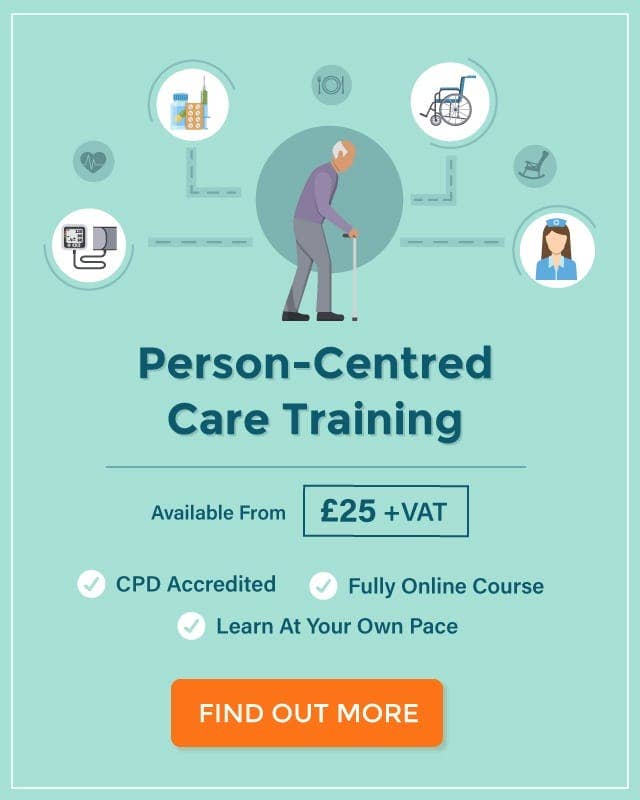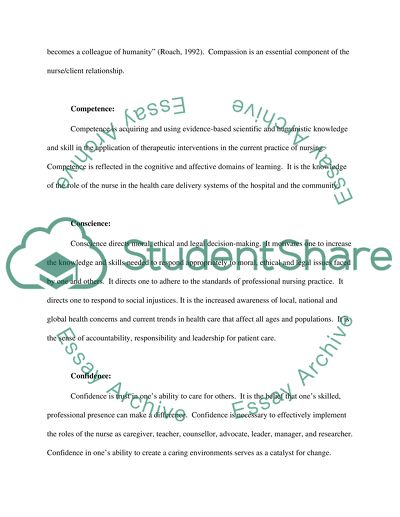6 Cs In Care
Human customer service for you and your employees. For groups of 1-50. In-network care, in more than your own backyard. Get multi-state, in-network providers.
- 6 Cs In Care Services
- 6 Cs In Care Facilities
- 6 Cs In Care Home Health
- 6 C's In Dementia Care
- 6 C's In Care Certificate
This material must not be used for commercial purposes, or in any hospital or medical facility. Failure to comply may result in legal action.
Medically reviewed by Drugs.com. Last updated on Nov 16, 2020.
The 6Cs of nursing – Care, Compassion, Competence, Communication, Courage and Commitment are seen in all of our programmes and are there to help people at every step of their journey: Compassion. Compassion should be embedded in the culture of an organisation; after all, how we care for each other affects how as nurses we care for their patients. And is asso ciated wit h care, c ourage, competence a nd comm itment, t hus ful fill ing. The 6Cs of nursi ng. The patient as sessment pro cess is rel iant on. May 30, 2016 It relates the care to the 6Cs and the Nursing and Midwifery Council’s Code, with a focus on the role of communication between the nurse and the patient. It provides useful points to reflect on for NMC revalidation. Citation: Barber C (2016) Communication and the 6Cs: the patient experience.
- Care Notes
6 Cs In Care Services
- Aftercare Instructions
WHAT YOU SHOULD KNOW:
- A cesarean (se-ZAYR-ee-an) section is one way that a baby can be delivered. Caregivers will do this surgery when you cannot have your baby through your vagina. Caregivers make an incision (cut) in your lower abdomen (belly) and into the uterus (womb). The baby is delivered through this incision. Your C-section may be planned for the delivery of your baby. You may also have a C-section done very quickly in case of an emergency situation. If it is an emergency, you may already be in labor while caregivers are getting you ready for the C-section.
- A common reason why a C-section would be needed is cephalopelvic (sef-ah-loh-PEL-vik) disproportion (dis-proh-POR-shun). This is a problem where the baby's head is too big to fit through your pelvis. If you are pregnant with more than one baby, or have had C-sections for past deliveries, a C-section may be needed. It also may be needed if your body is not moving through the stages of labor. This may place you and your baby in danger. A C-section may be done if your baby is positioned in a way that makes it dangerous to have a vaginal delivery. It may also be done for certain birth defects. It may be done if your baby is having heart rate changes or other problems during your labor. Problems with the placenta (plah-SEN-tah), or afterbirth, can also require delivery by C-section.
INSTRUCTIONS:
Medicines:
6 Cs In Care Facilities
- Keep a written list of what medicines you take and when and why you take them. Bring the list of your medicines or the pill bottles when you see your caregivers. Ask your caregiver for information about your medicines. Do not take any medicines, over-the-counter drugs, vitamins, herbs, or food supplements without first talking to caregivers. Your caregivers can find out if these medicines may not work well with other medicines that you are taking. If you are taking medicine that makes you drowsy, do not drive or use heavy equipment.
- Always take your medicine as directed by caregivers. Call your caregiver if you think your medicines are not helping or if you feel you are having side effects. Ask your caregiver before stopping any medicine. If you are taking antibiotics (an-ti-bi-OT-iks), take them until they are all gone, even if you feel better.
Follow-up visit information:
Keep all appointments. Write down your questions about your C-section delivery and having a new baby. This way you will remember to ask these questions during your next visit. Talk to caregivers about using birth control. Women may be able to get pregnant again shortly after giving birth.
Activity guidelines:
- It is very important to get enough rest after having a baby. Try to nap when your baby is sleeping. When feeding your baby, rest him on a pillow over your incision area. Ask your partner, friend, or a family member to help with laundry, cooking and other chores until you feel better. Ask your caregiver if there are any limits on driving. If you work outside the home, ask your caregiver when you should return to your job.
- Vaginal bleeding may increase if you are very active after having a baby. You may want to try resting more if your bleeding gets heavier. Talk to your caregiver before you start exercising. Together you can plan the best exercise program for you. It is best to start slowly and do more as you get stronger. Exercising makes the heart stronger, lowers blood pressure, and keeps you healthy. Ask your caregiver if you should avoid lifting heavy objects for a time.
What should I do about constipation?
Constipation (kon-sti-PAY-shun) is a condition where you have hard, dry bowel movements which are difficult to pass. With constipation, you may have BMs less often than usual and a feeling of fullness. You may feel sick to your stomach, and have head and stomach pain. Do not try to push the BM out if it is too hard. Walking is the best way to get your bowels moving. Eat foods high in fiber and drink lots of fluids to make it easier to have a BM. Good examples are high fiber cereals, beans, vegetables, and whole grain breads. Prune juice may help make the BM softer. You may use fiber medicine or a stool softener to help make your BMs soft and regular. Fiber medicine and stool softeners can be bought at grocery and drug stores.
How should I care for my breasts?

Your milk should 'come in' (your breasts should fill) two to four days after delivery. Before your milk comes in, your breasts may feel soft. When the milk comes in, your breasts may feel full and hard. Colostrum (koh-LOS-trum) is the 'early milk' or yellow liquid that you can squeeze from your breasts after delivery. Colostrum is what your baby will drink during the first couple of days after birth if you choose to breast feed. Colostrum has fat, carbohydrates, protein, and other special ingredients in it that help keep your baby healthy. If you plan to breast feed, ask caregivers to show you the correct ways to hold and breast feed your baby. Ask caregivers for more information about how to care for your breasts whether or not you are breast feeding.
When should I expect my monthly period to return?

You may start menstruating (having periods) seven to nine weeks after delivery, if you are not breast feeding. Your periods may be shorter, longer, heavier or lighter than before. You may not have a period for many months if you are breast feeding. You may not have one until you stop breast feeding. You can still get pregnant even if you do not menstruate during this time. Use some from of birth control every time you have sexual intercourse (sex), such as both foam and condoms together.
What should I do about my mood changes?
You may have mood changes after delivery. These changes may be called 'post partum depression' or 'baby blues'. Hormone changes, being tired, and feeling anxious and nervous about being a parent may cause these mood changes. Talk to your caregiver if you feel unable to care for yourself or your baby. Call your caregiver if you feel depressed (very sad). Call your caregiver immediately if you feel like you may hurt yourself or your baby.
What should I know about perineal care?
If you were in labor before you had a C-section, you may need to take special care of your perineum (the area between your legs). Keep your perineum clean to prevent an infection (in-FEK-shun). Caregivers may give you a squirt bottle of warm water or special cleaning solution to use. Squirt the water or solution on your perineum after urinating or having a BM, and then gently dry the area. You may only need to use a gentle soap and warm water to carefully wash your perineum. Change your sanitary pad every time you use the bathroom. Do not have sex or put things like tampons inside your vagina until three or four weeks after your delivery. Wait until your bleeding stops. Plan which type of birth control you will use before beginning to have sex again.
When do I expect my vaginal discharge to stop?
You will have a vaginal discharge called 'lochia' (LOH-kee-ah) after delivery. The lochia is bright red the first one or two days after delivery, and later turns a pink color. The lochia changes to a white or yellow color by about the tenth day after delivery. It is normal to have discharge on and off for six weeks after delivery. Use a sanitary pad rather than a tampon. This helps prevent a vaginal infection. The lochia should not have a bad smell.
CONTACT A CAREGIVER IF:

6 Cs In Care Home Health
- You have a fever.
- You are having increased vaginal bleeding and are soaking more than one sanitary pad every hour.
- Your bleeding lasts longer than one month after your C-section. Call if your bleeding becomes as heavy or heavier than a heavy period.
- Your incision is swollen, red, or has pus coming from it. This may mean that it is infected.
- Your incision comes apart.
- Your bandage (that covers your incision) becomes soaked with blood.
- You have bad smelling discharge from your vagina.
- The feeling that you need to urinate right away lasts longer than one week.
- You have pain, red streaks, or warmth on the lower part of one of your legs.
- You have a red, hot, and painful breast. You have cracked or bleeding nipples.
- You are not able to sleep well or are sleeping more than usual.
- You cannot eat or are eating more than usual.
- You feel that you are becoming sad or depressed. The sooner you see your caregiver, the easier it is to control your sadness or depression.
- You have questions or concerns about your C-section, or having a new baby.

SEEK CARE IMMEDIATELY IF:
- You feel that you may hurt yourself or your baby.
- You have trouble breathing all of a sudden. This could be a sign that you have a blood clot in your lungs. It could also mean that you are allergic (al-ER-jik) to a medicine you are taking.
- You have bad abdominal (belly) pain.
Copyright © 2012. Thomson Reuters. All rights reserved. Information is for End User's use only and may not be sold, redistributed or otherwise used for commercial purposes.
The above information is an educational aid only. It is not intended as medical advice for individual conditions or treatments. Talk to your doctor, nurse or pharmacist before following any medical regimen to see if it is safe and effective for you.
Further information
Always consult your healthcare provider to ensure the information displayed on this page applies to your personal circumstances.
6 C's In Dementia Care
Learn more about Cesarean Section (Aftercare Instructions)
